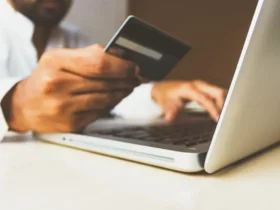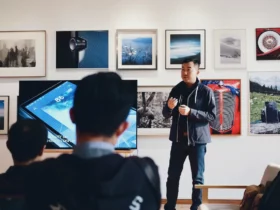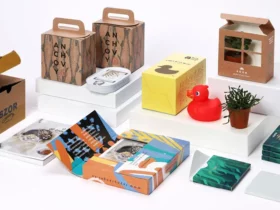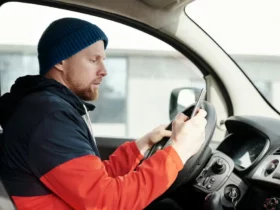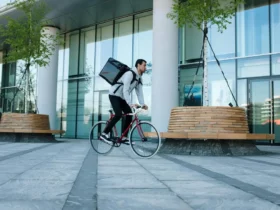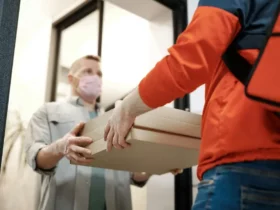Ever thought about joining the bustling world of food delivery? With DoorDash’s impressive reach of over 450,000 merchants and a solid 38% share in the US delivery market, it’s an avenue worth exploring. Whether you’re in it for some extra cash or considering a full-time gig, DoorDash offers a flexible way to earn money on your own schedule.
Embarking on the Doordash Journey: A Guide to Becoming a Delivery Driver
Starting off with DoorDash may seem daunting, but it’s quite straightforward once you get the hang of it. I’ll break it down so you can hit the road with confidence. Initially, you’ll want to take care of the signup process. All you have to do is download the DoorDash app and input your personal information, which includes your driver’s license and car insurance details. After uploading these documents, there’ll be a short waiting period while your background check is completed.
Here’s a tip from my own experience: always have a plan B. When I began, I signed up for both Instacart and DoorDash at the same time. This strategy covered me when one app was slow or if there were any technical issues. Currently, Uber Eats is my go-to secondary option, with Grubhub as an occasional choice. Especially after gas prices surged, it made sense to diversify the apps I use to maximize my earnings and reduce downtime.
Once you’re through the initial phase, you’ll be prompted to fill out a W9 partner agreement. Make sure you understand the terms before you sign. The next step is to order your free Welcome Kit from DoorDash, which acts as a starter pack for your deliveries. Instead of attending an in-person orientation, this kit equips you with the essentials for fulfilling orders.
Throughout this journey, remember that you are your own boss and can choose when and how much you work. The power is truly in your hands to shape this opportunity to match your lifestyle and financial goals. I’ve personally found that riding this wave of gig work, while sometimes unpredictable, can be incredibly rewarding if you approach it with an open mind and a readiness to adapt.
Requirements to Become a Doordash Driver
Age and Identification Criteria
To start dashing, you’ve gotta be at least 18 years old—no exceptions there. I remember clearly keying in my birthday during the signup process. Plus, you need a valid driver’s license and a social security number. Insurance is also key; we’re talking auto coverage that meets state requirements. Here’s something interesting: even if you plan to deliver by bike or scooter, you still need a government-issued ID.
Vehicle Requirements
If you’re using a car to make deliveries, it must be reliable. Although DoorDash doesn’t state a specific year or make, it has to get you from point A to point B without hiccups. Also, don’t forget to stay on top of your car insurance. If you’re more of a two-wheeler person, delivering by bicycle, moped, motorcycle, or scooter is also cool. Just remember, for bicycles, that driving record check is a non-issue.
Technology and Equipment Needs
Smartphone and App Usage
You can’t dash without a smartphone—it’s where all the magic happens! We’re talking iOS or Android; it doesn’t matter as long as it can handle the latest version of the DoorDash app. That’s your command center for picking up orders, navigation, and your financial tracking.
Necessary Accessories for Delivery
A phone mount can be a game-changer—it’s nice to be hands-free while navigating to your next drop-off. And don’t forget a sturdy, insulated bag. Sometimes you get one in your activation kit, but it doesn’t hurt to have an extra on hand for those larger orders or to keep things piping hot. The little things like these can make your dashes run much smoother.
And yeah, a good attitude helps big-time too. Your interactions with restaurants and customers can turn a routine delivery into something that might just brighten someone’s day—including yours.
The Application Process for Doordash Drivers
Step-by-Step Guide to Applying
Applying to be a DoorDash driver, or Dasher, is straightforward. First, download the DoorDash driver app or visit their website. I recommend doing a little homework beforehand, just so you’re familiar with what to expect. After installing the app or navigating to the signup page, you’ll begin by entering your personal information, which includes your name, email, and phone number.
Next up, you’ll need to provide details about your mode of transportation – car, scooter, or bicycle in some markets. This determines whether you require a driving record check. The app or website will prompt you to upload documents; I’ll cover this more in the next section.
After you’ve submitted your info, there’s a waiting period while your documents and background check are processed. Meanwhile, it doesn’t hurt to reach out to current Dashers for insights on what to expect. They’ve been where you are now and can offer helpful tips.
Documentation and Verification
For the Documentation and Verification step, you must upload your driver’s license and insurance if you’ll be delivering by car. For me, this was nerve-wracking, but it’s a necessary part of ensuring the safety and reliability of Dashers. Ensure your documents are current and legible – this will expedite the verification process.
If you’re delivering by bicycle, some of these requirements differ, which is a bonus if you prefer pedal power over engines. Keep in mind that all personal information is crucial for the next stage – background checks.
Understanding Background Checks
The Background Check is a vital component of any delivery service. DoorDash wants to ensure their Dashers are trustworthy and safe. This check reviews your driving record – if you’re using a vehicle – and scans for criminal history. When I did mine, it took a few days but can take longer. Don’t stress though; it’s part of the deal.
Remember to revisit your driver profile once notified your background check has cleared. At this point, you’re basically on the doorstep of starting your Dashing adventures. You’ll also be scheduling your orientation or requesting your activation kit. This kit is your ticket to begin making deliveries and earning cash.
Stay tuned as I walk you through managing this new gig – from optimizing your delivery routes to maximizing your earning potential.
Onboarding and Training
Orientation for New Drivers
When I started with DoorDash, I realized the importance of a proper orientation. While it might sound daunting at first, it’s actually pretty straightforward. Once my background check cleared, I simply revisited my driver profile. There, I found the ‘Schedule Orientation’ button, where I could see a list of available times and dates. Since some markets don’t offer in-person orientations, I had the option to opt for an activation kit. I clicked ‘Ship it to me’ and got a confirmation email with tracking info. DoorDash states the kit typically arrives within 1-4 days.
If you’re like me and prefer doing things at your own pace, the activation kit is a godsend. It’s a self-guided experience that gives you all the necessary tools – an insulated hot bag, a red card, and a set of instructions – to get started on your own terms.
Understanding the Doordash Delivery Process
The moment I downloaded the DoorDash driver app was when things really started to kick off. As a new Dasher, understanding the delivery process was vital. Here’s the gist: once you get a delivery request, you travel to the restaurant, pick up the order, and deliver it to the customer. Simple, right?
Let me break it down:
- Receiving Orders: The app is where all the magic happens. It notifies you of new delivery requests, which you can accept or decline based on your preferences.
- Picking Up Orders: Picking up the order is usually a breeze. Just swipe that you’ve arrived at the restaurant, grab the order (make sure it’s accurate!), and you’re on your way.
- Delivery to Customers: You’ve got the goods; now it’s time to get them to their destination. I always follow the GPS to ensure I’m taking the fastest route possible. Plus, some customers have special drop-off instructions, so I make sure to give them a quick read before dashing off.
Contactless deliveries are pretty common nowadays, so don’t be surprised if you’re asked to leave orders at the door. It’s all part of the job, and honestly, it’s as much about safety as it is convenience.
In my experience, communication with customers can make a huge difference. A quick text to let them know I’m on my way often leads to a smoother delivery and, sometimes, a better tip!
Doordash’s Payment Structure
Understanding Base Pay and Earnings
I’ve learned that DoorDash offers a variable base pay for deliveries, which is the minimum amount you’ll earn per job. The base pay varies from $2 to $10, depending on factors like the length and difficulty of the delivery. To break it down, the earnings you see on the app aren’t just stagnant numbers; they shift in real time based on the demand and complexity of the orders you accept.
Earning consistently can be a bit unpredictable since a big part of our earnings equation includes tips. Plus, there’s the cost of gasoline and vehicle wear and tear that can nibble away at my take-home pay. Some weeks, I aim to average what I’d consider a decent hourly rate, often attempting to hover around $20 an hour.
My earnings are directly affected by whether Dashers collectively accept or decline low-paying orders. If enough of us pass on those not-worth-the-effort requests, DoorDash might bump up the base pay a little to make those orders more appealing. It’s sort of an indirect group bargaining situation.
Tips and Bonus Earnings
While the base pay is a start, tips, and promotions are where earnings can really grow. Even if DoorDash does not show us the tips upfront, they’re a significant part of the income puzzle. I rely on tips to boost my earnings, even if it’s a guessing game until the order’s completion. But guess what? Para’s algorithm steps in to fill that gap, estimating tips so I can make more informed decisions about which deliveries to accept.
Promotions add an extra layer of strategy to my earnings. Peak pay promotions are most common, providing additional income during busy times when order requests overwhelm the number of available Dashers. It’s a tactical game of timing – I’ve found hitting the road during peak periods can substantially increase my earnings.
Maximizing Income through Efficient Delivery
Being efficient has always been key to maximizing my earnings. With a bit of experience and a good understanding of my delivery area, I’ve been able to chain orders together smartly to save on fuel and time. Staying organized and planning my routes can turn what would be separate trips into a smooth delivery loop.
DoorDash’s optional bonus structures have shifted over time. Previously, they’ve played around with bonuses based on the number of deliveries, but now, I mostly see per-order bonuses during higher-demand times, like major sports events or just after a holiday weekend. These bonuses are added to the regular compensation for that particular timeslot, acting almost like real-time surge pricing to attract more Dashers when needed.
To me, it’s all about the long game, balancing acceptance rates with the chase for the best orders. Sure, I keep tabs on my ratings and completion rates, but ultimately, it’s the strategic decisions on the road that count.
Scheduling and Flexibility
Choosing Delivery Hours
When I’m planning out my DoorDash shifts, the app’s Schedule Dash feature is my go-to tool. It won’t always have availability for the immediate ‘Dash Now’ option, which means I’ve got to plan ahead. I’ll select a date, time, and starting location that fits my calendar. If a prime slot isn’t available, I don’t get discouraged. Instead, I follow a pro tip: check back in seven-minute intervals. That’s right — DoorDash updates open slots every seven minutes. Just the other day, I swapped my evening shift to an afternoon one by staying on top of this update cycle.
Remember, there’s absolutely no penalty for scheduling more hours than I end up working. If I’ve had enough after a couple of hours, I can end my dash without any issue, as long as I’m not mid-delivery, of course.
Balancing Flexibility with Earning Goals
Flexibility is a significant perk of dashing. However, I’ve learned that too much flexibility without structure can be a pitfall if I’m not careful. I’ve set myself a daily earnings goal of $20 per hour to keep on track. To hit this target, I’ve had to become strategic about when and where I dash.
There’s a sweet spot between flexibility and earnings that I’ve honed over time. Here’s what I keep in mind:
- Corporate office parks tend to be lucrative during lunch hours.
- Suburbs see a spike in orders during dinner times.
- Weekends, particularly Sunday evenings, are quite busy.
And then there’s the element of weather and special events. Rain, cold weather, and live TV events like sports or awards shows can lead to a boost in demand — which is perfect for higher earnings. I also stay vigilant for promotional offers from DoorDash, which can add a nice bonus to the night’s takings.
Tips and Best Practices for Doordash Drivers
When it comes to delivering with DoorDash, a few key strategies can significantly improve your experience. I’ve learned that efficiency and professionalism go a long way. Let me share some insider advice that’ll keep those ratings up and stress levels down.
Efficient Route Planning
A good Dasher is almost like a chess player, always thinking a few moves ahead. Here’s a couple of strategies I use regularly:
- Mapping Efficiency: Every second counts in this gig. I always check my routes to streamline my pick-up and delivery paths. It’s not just about speed; it’s about smart navigation.
- Avoiding Potential Delays: I keep an eye on the local traffic updates and events. Got a big game downtown? I’ll steer clear to avoid those jams.
Considering the Dashing Regions, sticking to areas that I know well has practically given me a PhD in Dashing. Familiarity with the terrain minimizes unexpected hurdles and speeds up deliveries.
Handling Delivery Issues and Challenges
No matter how much you plan, things can still go awry. Here’s how I roll with the punches:
- Order Accuracy: Double-checking orders before leaving the restaurant saves headaches later. If there’s a mistake, it’s quicker to rectify it right then and there.
- Proactive Updates: If there’s traffic or a wait at the restaurant, customers appreciate a heads-up. I’ve got my list of pre-written texts ready to go to keep them informed.
Customer Service and Communication
Top-notch customer service can set you apart from the pack.
- Dress for Success: No need for a suit and tie, but I make sure I’m neat and tidy. Appearances matter, and a clean shirt does wonders.
- Mastering the Art of Text: Timely updates can mean the difference between a good rating and a great one. Sending pre-written messages has never been easier.
Empathy is key. If I’m waiting longer than expected, I apologize, even if it’s not my fault. It shows the customer I care about their time too. I’ve found that a little bit of understanding goes a long way in this business. Keeping cool under pressure and maintaining good communication can turn a challenging situation into a five-star performance. Where some might see roadblocks, I see opportunities to prove just how reliable and attentive a Dasher can be.
Safety Measures for Doordash Drivers
Personal Safety Protocols
When I’m out on the road fulfilling orders, I put my personal safety first. One of the essential things I do is always keep my phone charged and the Dasher app updated to access the emergency assistance feature quickly. I’m cautious about where I park, especially in poorly lit or secluded areas. I often find myself relying on the trusty flashlight or headlamp I keep handy for deliveries at night. Before heading out, I also ensure that I’m dressed in comfortable clothing that doesn’t restrict my movements because you never know when you have to be quick on your feet.
Another step I take for personal protection is sharing my location with a trusted person. Most smartphones have this feature, and it gives me peace of mind to know someone I trust can see where I am. Lastly, I listen to my gut. If something feels off about a delivery or a pickup location, I don’t hesitate to contact support through the app. DoorDash has a team ready to help if things get uncomfortable or safety becomes a concern.
Vehicle Maintenance and Safety
As for my vehicle, regular maintenance is non-negotiable. I follow a checklist to ensure it’s always in top condition:
- Tire pressure: Checked weekly
- Oil levels: Monitored regularly
- Lights: I make sure all headlights, taillights, and turn signals are functioning
Apart from general upkeep, I also have a few items in my car for increased safety:
- First aid kit: For unexpected minor injuries
- Safety equipment: Such as flares or reflective triangles for roadside emergencies
I’m meticulous about keeping my vehicle clean, inside and out. This not only presents a professional image but also reduces potential distractions caused by loose items rolling around while driving. After all, avoiding distractions is a vital safety practice.
Lastly, I keep my insurance and registration up to date-and easily accessible. Although I hope never to need them in a critical situation, being prepared is always better than being caught off guard. It’s all about being proactive rather than reactive on the road.
Advantages and Challenges of Being a Doordash Driver
Pros of Driving for Doordash
One of the biggest advantages of being a Doordash driver is flexibility. I decide when I work and for how long, which means I can align my Dashing schedule with other personal and professional commitments. The hustle element is invigorating, too – I know the more I deliver, the more I earn. This direct connection between effort and reward is something I appreciate deeply.
The job also offers a variety of human interactions. I’ve met all kinds of people, from restaurant staff to the customers I deliver to. These interactions break up the monotony of a typical 9-to-5 and often result in enjoyable and sometimes even memorable encounters. Plus, who doesn’t like being the bearer of a good meal?
Another pro is the immediacy of payment. I can literally see earnings add up in real time after each delivery, which gives a constant sense of accomplishment. Sometimes there’s also the bonus of peak pay during high-demand times, which can significantly increase my earnings. I’ve learned the patterns and primed my work hours for these lucrative periods.
Potential Cons and How to Navigate Them
Despite the pros, there are challenges. For starters, inconsistency of earnings can be a hassle, mainly due to the fluctuating demand for deliveries. However, by working peak hours and becoming selective with the orders I accept, I’ve managed to mitigate this issue quite effectively.
The job requires that I use my own car, which leads to additional wear and tear. To keep up, I stay on top of my car’s maintenance – regular checks and timely repairs ensure I’m never out of commission unexpectedly. Flat tires or engine troubles won’t keep me off the road for long because I’m prepared.
Then there’s the navigational challenges in unfamiliar areas or sprawling apartment complexes. I’ve tackled this by sticking mostly to regions I know well, which cuts down on delivery times and stress. When I do venture into new territory, I use highly-rated GPS apps to avoid getting lost and keep delivery times short.
Customer and restaurant dynamics can also get tricky. I’ve encountered less-than-friendly individuals, but keeping my cool and staying professional allows me to navigate these situations without incident. Reflecting a positive attitude, despite any negativity, often results in better tips and ratings.
Occasionally I receive orders from grocery stores like Walmart, which can be daunting because of the variable item count. I’ve learned to check the details carefully and decline those that don’t seem worth the effort. No need to haul four cases of water up three flights of stairs if it’s going to cost me time and energy disproportionate to the payout.
Comparing Doordash with Other Delivery Platforms
Doordash vs. Other Delivery Services
When weighing the options between Doordash and its competitors like UberEATS, GrubHub, and others, I’ve noticed a few distinct differences. Technology and cultural trends have pushed the growth of the food delivery industry substantially, making it essential to understand where Doordash stands within this competitive market. Doordash holds a significant share of the US delivery market, yet exploring other platforms is something I’ve done to ensure I’m not missing out on lucrative opportunities. In my experience, each service brings its own set of advantages and drawbacks that cater to the varying preferences and priorities of drivers.
Factors to Consider When Choosing a Platform
Here’s what I’ve learned to take into account before deciding on a food delivery platform:
- Earnings Potential: Doordash often leads in earnings with its competitive pay model, but this can fluctuate based on market demand. Diversification is key, so I’ve signed up with various delivery apps like Para, which allows the advantage of multi-mapping and potentially increasing my intake.
- Flexibility: One of Doordash’s standout features is its flexibility. I choose when and how much I work, which aligns perfectly with my lifestyle. However, other platforms can also offer this flexibility, so I keep my options open.
- Market Penetration: Doordash has a strong presence in many areas, which can mean more delivery requests and potentially higher earnings. However, in certain cities or neighborhoods, other platforms might dominate. It’s worth signing up for multiple services to see which one is more active in my desired regions.
- User Interface: I’ve found that Doordash’s app is intuitive and user-friendly. However, it’s worth trying out the different interfaces of other delivery services to see which one I’m most comfortable with.
- Payment Methods: Immediate payment options are a big plus. While Doordash offers fast payments, other services might have better systems or terms that fit my financial needs.
- Customer Base: Some platforms may have a loyal customer base, while others might offer incentives to attract new users. This affects the number and types of deliveries I can get.
- Operating Costs: I always calculate the costs, such as gas and vehicle maintenance. While earnings can be higher with one service, the operating costs can differ significantly.
Understanding these factors helps me gauge the effectiveness and profitability of each platform. It’s all about analyzing and adapting to what works best according to my needs and preferences. And with over 6100 deliveries under my belt, I’ve seen a bit of everything — the good, the bad, and the delicious.
Conclusion
I’ve walked you through the ins and outs of dashing your way to extra cash. Remember, the key is to find what fits your lifestyle and financial goals. Whether it’s the flexibility to work when you want or the thrill of hustling for those peak pay bonuses, DoorDash offers a unique opportunity to take control of your earnings. I’ve enjoyed sharing my insights and hope they help you navigate your journey as a DoorDash driver. Here’s to hitting the road and bringing home the bacon—or, better yet, delivering it!
FAQ – Frequently Asked Questions
How much can I earn with DoorDash?
That’s usually the first question on everyone’s mind. The answer isn’t as straightforward as one might hope because earnings vary widely based on several factors like location, time of day, and how busy the app is at a given time. DoorDash pays per delivery and includes base pay, promotions, and tips. So, you’ll want to dash during peak times and take advantage of DoorDash’s Peak Pay when orders are in high demand.
What’s the Red Card I’ve heard about?
Ah, the Red Card! It’s a prepaid card provided by DoorDash. Sometimes, you’ll need to pay for an order at the restaurant with this card. It’s preloaded by DoorDash, so it won’t affect your personal finances. But remember, it’s for DoorDash orders only.





